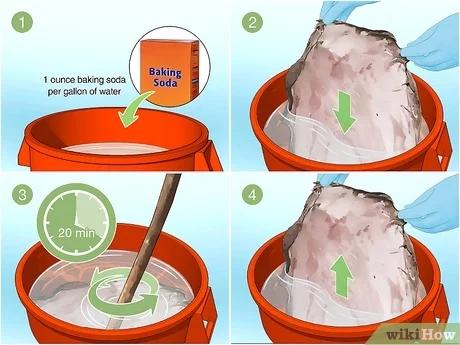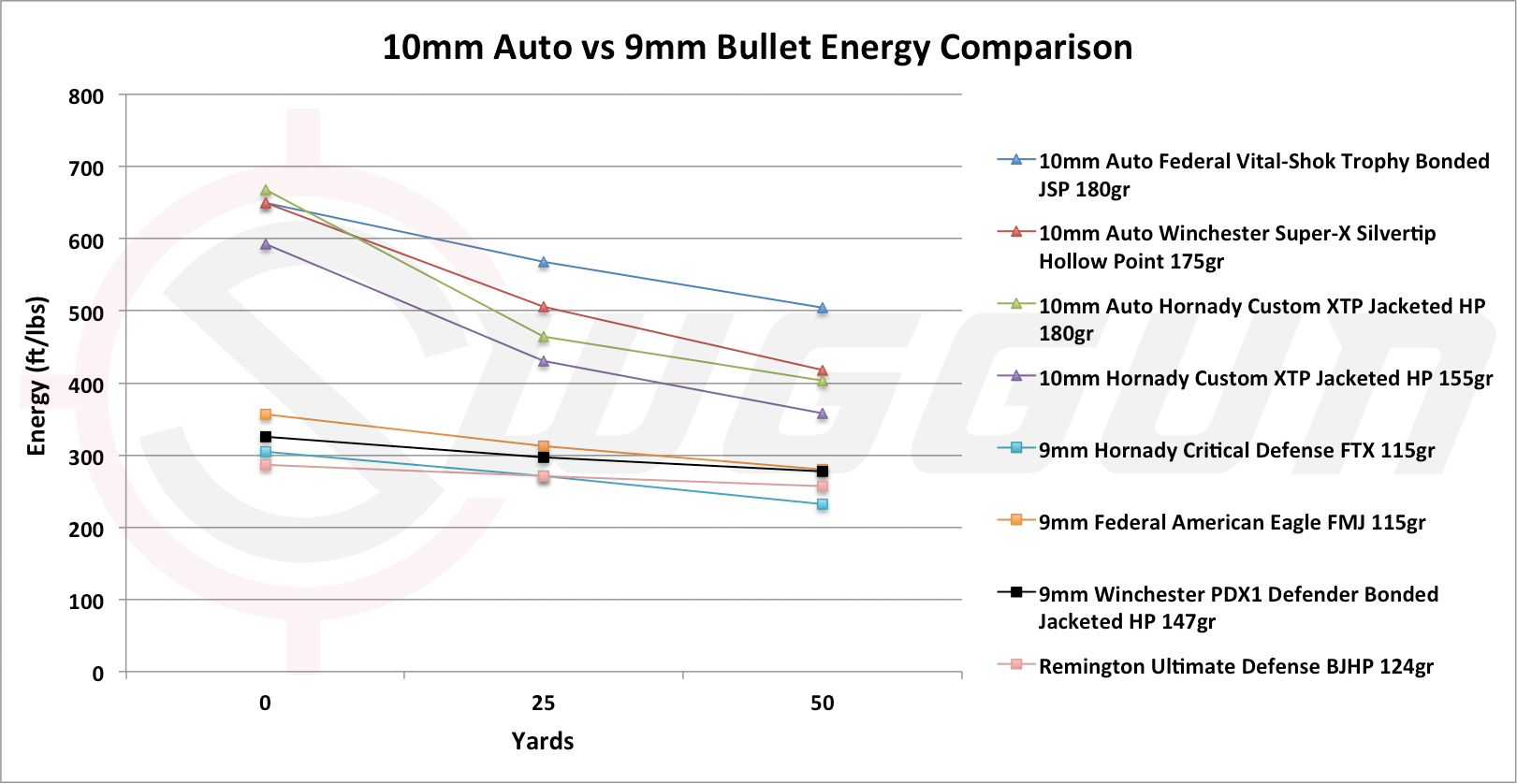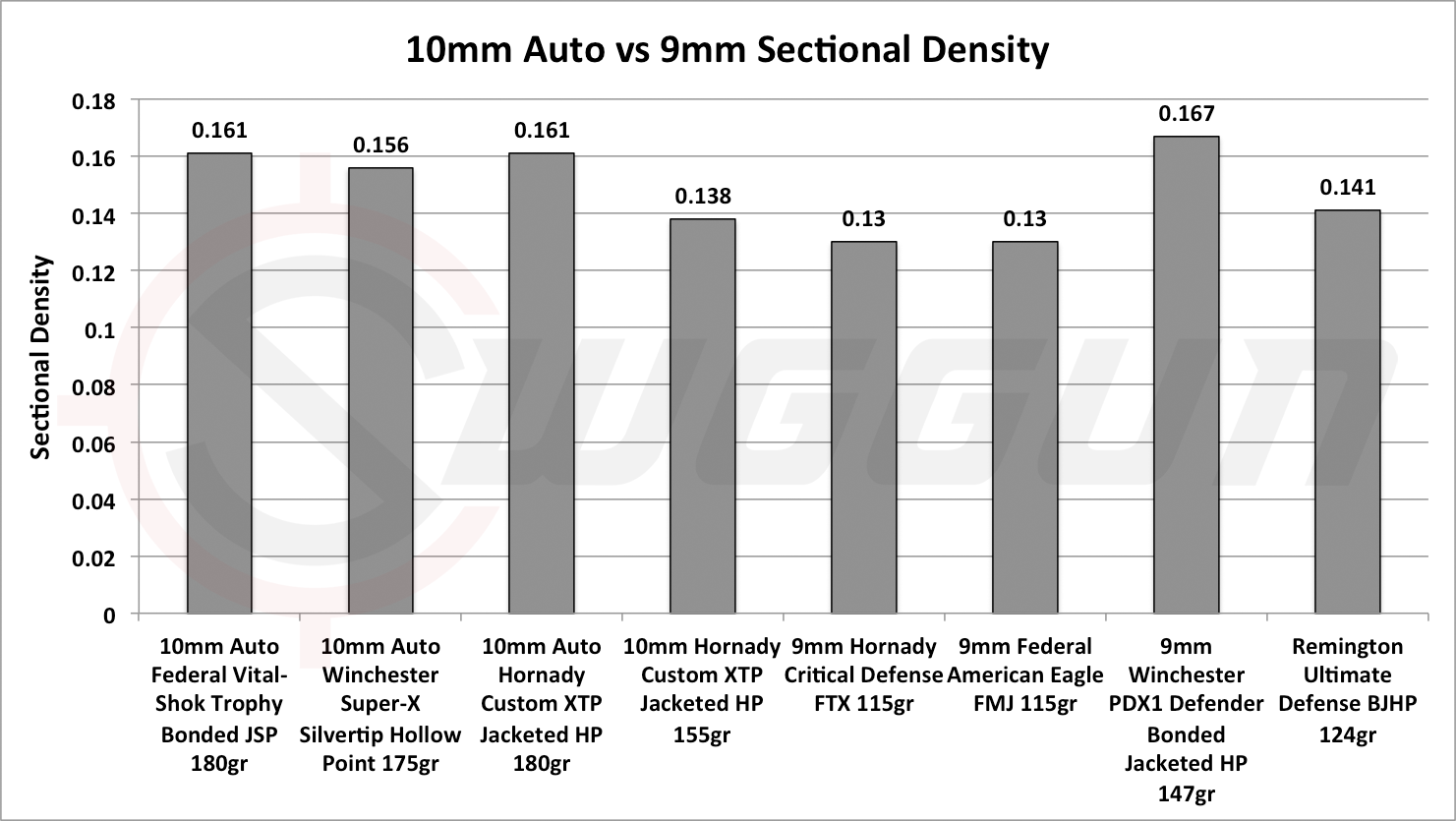Wyatt Earp has said:
Fast is fine, but accuracy is everything
And I just thought how many airgunners are obsessed with muzzle velocity and muzzle energy,
Yet few really bother about air rifle accuracy.
Well, perhaps it’s a general assumption that if an air rifle is fast enough, then it is accurate.
And not just that.
I’ve come across several air rifle myths that seriously need to be debunked.

Allow me to mention just a few before we get into the dynamics of air rifle accuracy:
- Longer barrels are more accurate than shorter barrels
- Cheap or expensive, all pellets are the same
- It is best to use pointed pellets when hunting instead of domed or hollow-point pellets
- To get a good quality airgun, you have to drain your wallet
- All air rifle barrels should be cleaned regularly
- Purchase a high-end scope to improve your airgun accuracy
- Chinese, American, Turkish, German, etc. airguns are all the same
- You can’t recondition a broken airgun to proper functionality
- Air rifles will never be as accurate as firearms
- Use a BB gun to scare animals away
- It’s impossible to find hunting permissions nowadays
I blame this for misinformation.
For now, let’s debunk the myths surrounding air rifle accuracy.
Table of Contents
- First of all, what is air rifle accuracy?
- How is air rifle accuracy measured?
- Main reasons for inaccuracy
- Tips to improve air rifle accuracy
- In conclusion
- Frequently Asked Questions
- 1. What affects air rifle accuracy?
- 3. How to hold an air rifle for accuracy?
- 4. What is the highest-rated air rifle in accuracy?
- 5. How to improve the accuracy of CO2 air rifles?
- 7. How far can a pellet gun shoot accurately?
- 8. How far can a .22 air rifle shoot accurately?
- 9. What is a good accuracy for a .22 air rifle?
- 11. .177 or .22 – which is more accurate?
- 12. What is the most accurate .22 pellet?
- 13. Are pointed pellets more accurate?
- 15. Does cleaning your rifle affect accuracy?
- 19. What is the most accurate .177 air rifle?
- 20. Air rifle barrel length vs accuracy?
First of all, what is air rifle accuracy?
I can confidently define air rifle accuracy as the ability of the air rifle to shoot ammo and hit the intended target. That’s all.
When you aim at a target, you really expect the pellet to land right where you wanted it to.
After all, you’ve learned how to use the open sights, or the scope, you’ve mastered the correct way to hold the airgun,
And you have great expertise in pulling that trigger – whether one-stage or two-stage.
And then it seems you can’t just hit the target.
Sometimes the pellet hits many inches above the target, sometimes below, sometimes to the right, sometimes to the left .
When that happens:
- Some people blame the air rifle for inaccuracy
- Some people blame themselves
- Some people blame forces of nature
For your information, all the three groups of people are correct. But let us focus on the first group.
How is air rifle accuracy measured?
To measure accuracy, you need to have some paper target, preferably patterned like a darts board, with the bullseye at the very center.
Now stand with your air rifle at some specific distance from the target – 10 yards, 20 yards, 30 yards, 40 yards, 50, yards, 100 yards, or whichever distance you like.
This is because, when it comes to describing the accuracy-test results, you have to be specific regarding the distance from the target the test was done.
The results are not always the same for different distances.
Aim at the bull’s eye – in this case, the intersection of the 2 red lines. Fire 5 shots, each time aiming at the bull’s eye.
You can do 10 if you like.
The pellets will hit the target paper, but very unlikely at the very same spot.
You are likely to have the pellet marks spread as follows.
Use vernier calipers or a plain ruler to measure the distance between the two pellet marks that are farthest from each other.
Assuming this distance is ¾ inch and you took the shots standing 20 yards away from the target,
The accuracy of the air rifle can be stated as ¾” at 20 yards.
There must be some reason why all the pellets don’t hit the bull’s eye as intended.
Here are the reasons.
Main reasons for inaccuracy
1. The barrel
When you pull the trigger and the pellet begins its ballistic flight, the very first component of the air rifle to guide the flight path of the pellet is the barrel.
Barrel design
The design of the interior of the barrel – what we call the bore – can affect the movement of the pellet within the barrel.
The three most common designs are:
- Smooth bore barrel
- Rifled barrel with spiral grooves
- Rifled barrel with longitudinal grooves
The spiral grooves in rifled barrels cause the pellet to spin along its longitudinal axis as it flies out of the muzzle.
This makes the pellet fly a long distance and in a more straight flight path.
For smoothbore barrels, the pellet flies without this spin.
As such, it tends to lose energy after some short distance.
If the target is far, a pellet shot from a smoothbore barrel will most likely veer off its straight flight path.
This implies that air rifles with rifled barrels tend to be more accurate (even in long ranges) than air rifles with smoothbore barrels.
Imperfections in the barrel
Apart from the barrel design, the bore may have some burrs and other tiny imperfections, especially for brand-new rifles.
This is normal in many steel products and should not be taken as incompetency on the part of the manufacturer.

As a matter of fact, that is what led to the idea of seasoning air rifles after purchase – or rather breaking-in air rifles.
The process aims at shooting as many pellets as possible in the hope that the abrasive nature of the pellets will get rid of these burrs.
If the imperfections are more pronounced, they can have a significant effect on the ballistic flight of the pellet.
The pellet may bounce off a bump within the bore and change direction, as well as lose speed.
Barrel Alignment
Suppose the longitudinal axis of the barrel is not perfectly parallel to the longitudinal axis of the scope.
That means the barrel will be pointing in a different direction from your line of sight.
You don’t expect a pellet shot from such a rifle to hit the bull’s eye.
In line with this issue is barrels that are not firmly fixed to the stock. This can be a result of:
- Poor machining quality by the manufacturer
- Mishandling by the airgun user
- Warping and thickening of the stock due to absorption of moisture – especially for wooden stocks
- Loose screws
Whenever you fire a shot, the resulting action and reaction forces may cause the barrel to slightly move from its initial position, thus affecting the flight of the ammo.
Muzzle damage
The muzzle is the front-most part of the barrel from where the ammo exits into the air.
Any damage, corrosion, flaw, or obstruction around the muzzle can significantly alter the intended flight of the pellet.
2. Pellets
Crosman’s Jock Elliot narrates his harrowing experience of how he came to the conclusion that airguns are as individualistic as people.
It was kind of an air rifle accuracy test.
The weather was perfect, the guy was good, and the gun was awesome.
He tried to shoot groups but it seemed the airgun was not just getting it right.
He tried different target distances – all this proved futile.
He used all his popular pellets – the shot groups still looked horrible.
As a last resort, Jock tried some pellet brands he rarely uses.
And that worked the magic.
It’s fantastic – or rather confusing – how two identical Benjamin Trail NP air rifles can fail to shoot with similar accuracy using a given pellet brand.
But that’s the reality of the matter – just like you can be a die-hard football fan while your identical twin brother has no idea who CR7 is.
The bottom line is that there is the most perfect pellet for your air rifle out there.
It is not guaranteed that even the pellets supplied with the airgun will work best.
It is upon you to test and test and test – until you find the perfect match.
3. The powerplant
It is now a popular saying in the airgun world that PCPs and gas piston airguns are more accurate than springers.
That might be true, but the actual culprit is the air rifle user.
Obviously, springers produce more recoil than PCPs and gas piston airguns.
Recoil is known to generate vibrations that destabilize the hold of the airgun.
If you hold a springer flimsily, it is very likely that your shots won’t be accurate.
The slight movements of the airgun affect the flight path of the pellet.
4. The trigger
The more confident you are on the trigger, the more accurate you are likely to turn out.
Some triggers are so perfectly made that you know the exact distance to pull them before the airgun fires.
The pull is likewise not too heavy nor too light.
That’s what brings accuracy.
If the trigger pull feels so heavy, it may be difficult to master exactly how much you pull it before it fires .
The same is the case with a trigger that is too light and those that are not crisp.
Tips to improve air rifle accuracy
To improve your air rifle accuracy, you basically have to rectify the problems mentioned above.
Do the following to boost the accuracy of your air rifle.
- Use a spirit level to ensure that you are holding your air rifle as level as possible, and not in a slanted position.
- Some airguns have their own in-built spirit levels, but for others, you’ll need a separate one.
- If your trigger is adjustable, tune it to a position that is crisp and predictable enough – making sure it’s not so heavy nor so light.
- Use good quality scope mounts that perfectly align the scope with the barrel.
- Have some adequate eye relief when shooting – don’t place your eye too near the rear lens, or too far from it.
- Make yourself as stable as possible before shooting.
- Perhaps kneeling will give you more stability than standing – or even leaning your body against a tree.
- Master the correct way of holding your air rifle and stick to that.
- Try out different pellets until you find the brand and type that your air rifle likes.
- Then stick with it, as long as it serves the purpose.
- Tighten loose screws on the stock to ensure the point of aim is as close as possible to the point of impact.
- Clean your barrel in case the inaccuracy problems are caused by leading.
- Master your trigger control.
- Pull it steadily – rather than snatch it vigorously.
- Invest in a good air rifle scope specifically designed for either target shooting or hunting
- Don’t buy the most powerful air rifle if you are just starting out in this shooting hobby.
- Powerful airguns usually produce much recoil and may be heavy and longer than the rest.
- You’ll need to be a skilled shooter to shoot accurately with them.
- From experience, it is good to sight in your rifle at around 30 yards if you are using a .177 or .22 caliber air rifle.
- You won’t have accuracy problems for targets that are a bit farther or nearer by 15 yards.
- Don’t use junk pellets for sighting in and then your preferred pellet brand for the actual shoot.
- Use the same pellets all through for more accuracy.
- Practice with your air rifle until you can consistently achieve 1-inch shot grouping at your typical target distance.
In conclusion
There are several factors that can affect the accuracy of airguns.
Some of these factors relate to the airgun itself, while some concern the user of the air rifle.
For the rifle-related factors, the barrel and pellets cause nearly 90% of all the accuracy problems.
Do all the other factors contribute a mere 10% to the air rifle accuracy issues?
That tells you to wisely choose your air rifle by considering the quality of the barrel, as well as purchasing quality pellets from trusted brands.
Once these two are sorted, work on your shooting skills until you get it right.
Frequently Asked Questions
1. What affects air rifle accuracy?
Airgun accuracy is mainly affected by the following factors:
- The type of barrel – whether rifled or smooth bore
- The presence of imperfections within the bore of the barrel
- The brand, shape, and weight of pellets used
- Whether or not the air rifle has been sighted in properly
- Whether or not the scope is mounted properly
- The bedding quality of the barrel on the stock of the air rifle
- The preciseness of the trigger
- The capability of the shooter to properly hold the air rifle, aim at the target, and make a confident shot
3. How to hold an air rifle for accuracy?
If you are right-handed, follow the following steps.
If you are left-handed, replace every ‘left’ with ‘right’ and every ‘right with ‘left’.
- Place your left palm under the forearm of the air rifle. Leave the palm open rather than tightly clenching the gun.
- Wrap your right hand around the pistol grip with your forefinger gently resting on the trigger
- Let the butt pad rest on your shoulder and gently press your cheek against the stock.
- You can now breathe in, breathe out, pull the trigger.
This is what we refer to as the artillery hold.
Watch Tom Gaylord below for more details on the artillery hold:
You may also wish to use some fixed support for the air rifle instead of your palm.
Virtually any support can work, but you better go with a custom-made bipod stand.
4. What is the highest-rated air rifle in accuracy?
The Benjamin Marauder PCP air rifle is one of the highest-rated airguns in terms of accuracy.
It is capable of 1.5” shot groups at 100 yards. And it gets even better at closer shooting ranges.
Great shooters have even achieved 1’ groupings at 70 yards.
One famous shooter, Ted, was able to achieve the following shot groups with the .25 Benjamin Marauder at 100 yards.
Looks too good to be true!
=> Read Benjamin Marauder pellet gun review here
5. How to improve the accuracy of CO2 air rifles?
In addition to the general air rifle accuracy tips just discussed, CO2 air rifles beg a little more simply
Because they use CO2 cartridges as their main power plant.
The CO2 in the gas cylinder exists as both a pressurized gas and a liquid.
When some of the gas is released upon firing a shot, some more liquid CO2 turns into a gaseous form.
The pressure within the cylinder, therefore, remains somewhat constant until all the liquid is used up.
Now, the pressure of CO2 depends on the temperature.
A decrease in temperature will cause the pressure to drop.
And that means less velocity for the pellet.
Imagine you sighted your gun at 35 degrees celsius and you are now shooting the gun at 25 degrees Celsius.
You will very likely not hit the point of aim.
Therefore, the best practice is to sight in your CO2 air rifle at the same temperature you’ll be doing the real shooting.
For semi-automatic air rifles – which allow you to fire multiple shots in quick succession – it’s a good practice to allow some seconds to elapse before making the next shot.
Every time you fire a shot, some CO2 changes from liquid to gas.
This cools the air rifle and tends to reduce the pressure in the cylinder.
Therefore, each subsequent shot becomes less and less powerful.
Lastly, ensure all seals are tight enough to hold the gas without leakages.
7. How far can a pellet gun shoot accurately?
Some high-end pellet guns are known to have great accuracy even up to 300 yards.
However, a great majority of pellet guns are limited to shooting ranges less than 100 yards.
The less powerful ones will not shoot accurately beyond 30 or so yards.
8. How far can a .22 air rifle shoot accurately?
The current world record for the longest airgun hit stands at 1400 yards.
That’s a whopping 1.28 km!
The air rifle used was the .22 Altaros M24 – which mimics the legendary M24 sniper rifle.
However, note that this is an isolated shot.
It may be difficult to get a measurable group of shots at that distance.
As a matter of fact, the manufacturer states that the accuracy of the Altaros M24 is 1 MOA up to 200 yards,
Which is equivalent to 2” groupings at 200 yards.
Other high-end .22 air rifles boast 1” groups at 100 yards, while others claim to be as accurate as ½” groups at 50 yards.
Repeatedly getting such good accuracy results is challenging.
You rather set your mind to something like 1” groups at 30 yards, 2” groups at 50 yards, and 4” groups at 100 yards.
9. What is a good accuracy for a .22 air rifle?
As elaborated in the previous question, some expert air gunners have achieved exceptionally good accuracy with their .22 air rifles.
- 1” groupings at 100 yards is considered exceptional accuracy
- 0.5” groupings at 50 yards is also considered exceptional accuracy
Good accuracy for a .22 air rifle is something in the range of:
- 1” shot groups at 30 yards
- 2” shot groups at 50 yards
- 4” shot groups at 100 yards.
11. .177 or .22 – which is more accurate?
At some fixed distance, say 50 yards, a .22 pellet will more likely hit the point of aim than a .177 pellet.
You see, the .22 pellets are heavier than the .177 pellets, and therefore are less likely to be swayed by the wind.
But in yet another twist, the speed of .177 pellets is usually higher than that of .22 pellets.
As such, the .22 pellets tend to lose their flight power faster than the .177 pellets.
In such a scenario, the .177 air rifles can be said to be more accurate than .22 air rifles.
Additionally, it is now known that airgun manufacturers give better attention to .177 air rifles so as to boost their accuracy beyond what the .22 air rifles can achieve
Since the .177 airguns are mostly used in target shooting competitions.
With all these facts in mind, neither of the two air rifles can be openly termed as more accurate than the other.
(For more on the differences between .177 & .22 and which jobs they do best, see this post.)
12. What is the most accurate .22 pellet?
We just agreed that air rifles are generally fussy when it comes to pellets.
No single brand will produce the same results in several different air rifles.
But to narrow down your search, consider trying the following trusted brands:
- H & N Baracuda Match pellets
- JSB Jumbo monster pellets
- RWS Hobby pellets
- Crosman premier pellets
- H & N field target trophy
13. Are pointed pellets more accurate?
In some way, yes.
This is because of the streamlined shape that makes the pellet face the least air resistance on its flight path.
However, the round-nosed pellets are also streamlined to some extent.
And many other pellets have some element of streamlining.
Maybe the biggest difference would be noted if there were cube-shaped pellets.
15. Does cleaning your rifle affect accuracy?
Not necessarily.
The bore of the barrel naturally cleans itself as you regularly shoot pellets.
However, there are instances when the dirt within the bore can be so stubborn that the natural cleaning process is not effective.
In such cases, thoroughly cleaning your air rifle may improve accuracy.
Cleaning in the wrong way may also negatively affect accuracy.
Take the example of using water on a wooden stock.
Wood thickens and warps when it absorbs moisture.
The result is poor bedding quality of the barrel and a subsequent decrease in accuracy.
19. What is the most accurate .177 air rifle?
The Air Arms S510 XS Ultimate Sporter Air Rifle easily delivers sub-MOA shot groups at 100 yards.
This is possible with the 1035 fps muzzle velocity and 3626 PSI PCP power plant.
A single fill gives you 40 fully-powered shots. You will however have to cough a colossal 2,000 USD to acquire this beast.
If you have less than 200 bucks but are still enthusiastic about great accuracy, go for the likes of the Hatsan 95 Break Barrel Air Rifle.
20. Air rifle barrel length vs accuracy?
As highlighted in the intro section of this piece, the notion that air rifles with longer barrels are more accurate than those with shorter barrels is nothing but a myth.
There are air rifles with shorter barrels that are more accurate than their counterparts with longer barrels.
It’s rather the quality and design of the barrel that matters when it comes to accuracy.
However, for CO2 air rifles, a longer barrel improves the muzzle velocity and punching power of the pellet up to a certain optimal length.
Beyond this optimum point, muzzle velocity and energy start decreasing.
Altering the barrel length in CO2 air rifles, therefore, has a significant effect on air rifle accuracy.

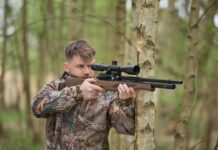






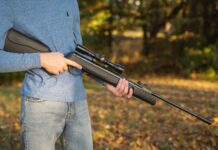

















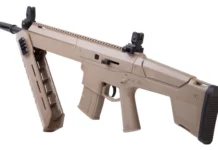











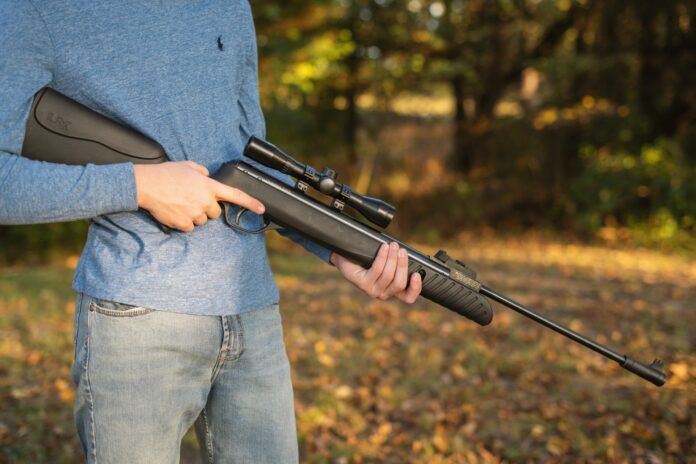
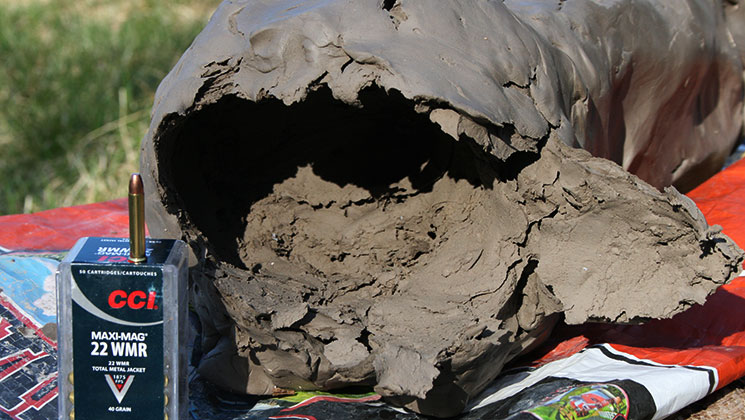
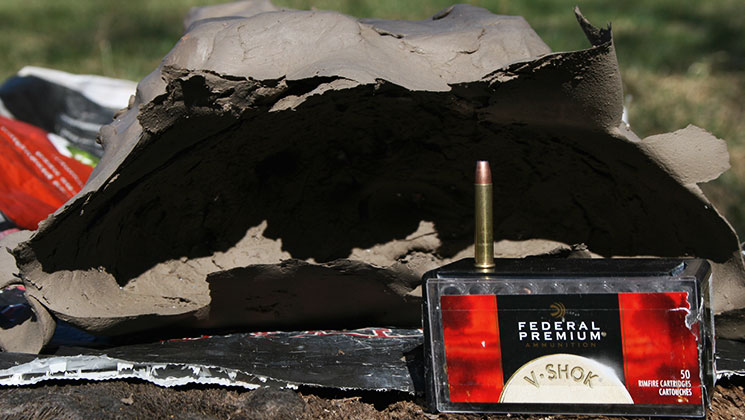
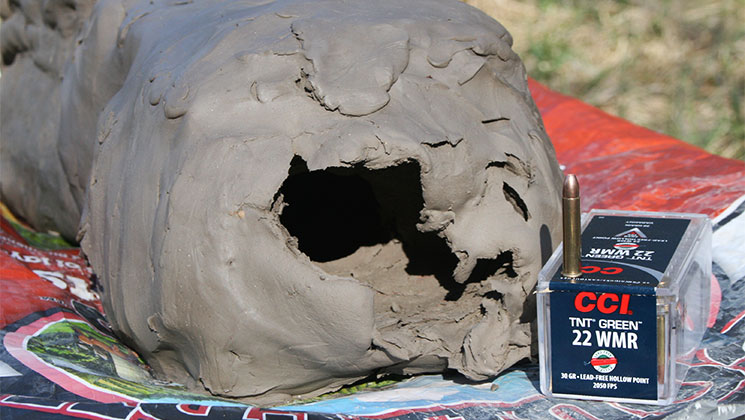
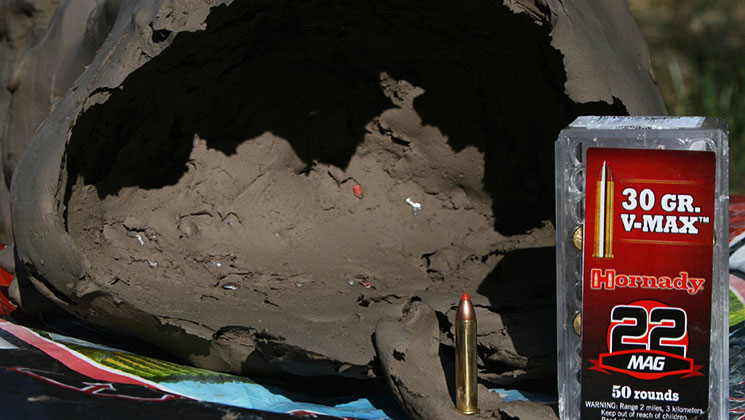
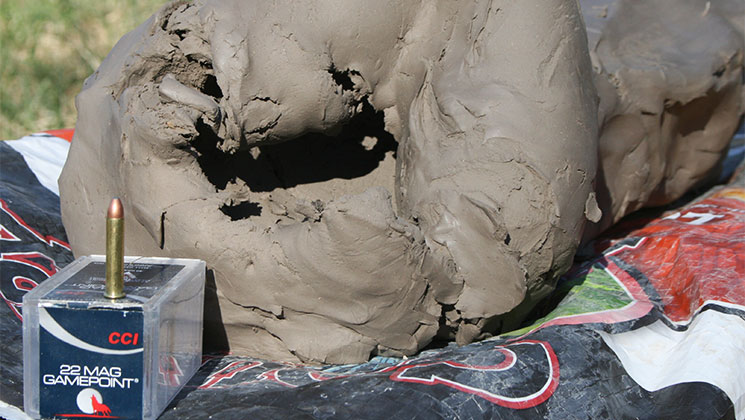
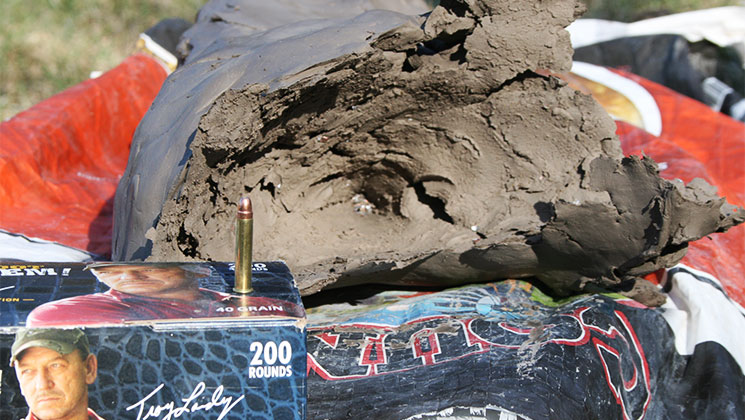
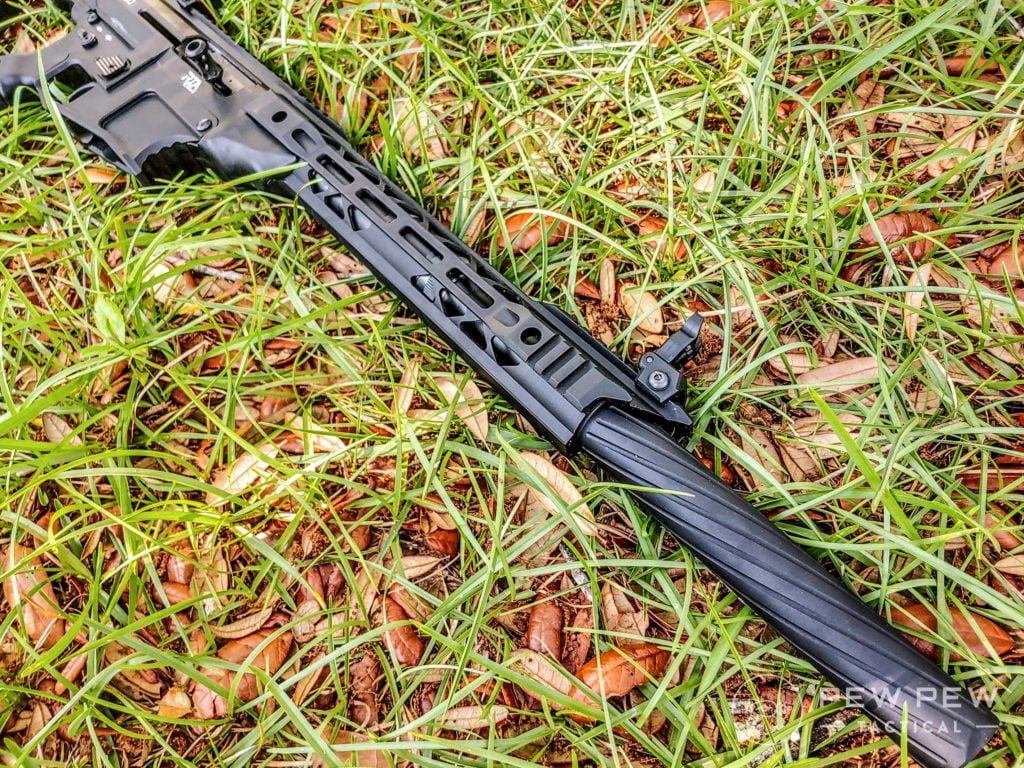
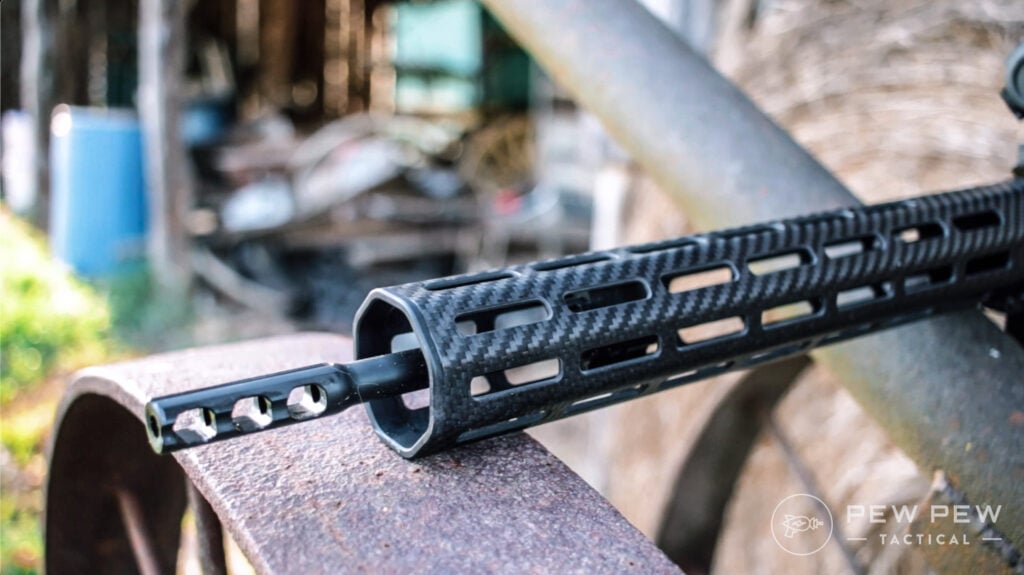
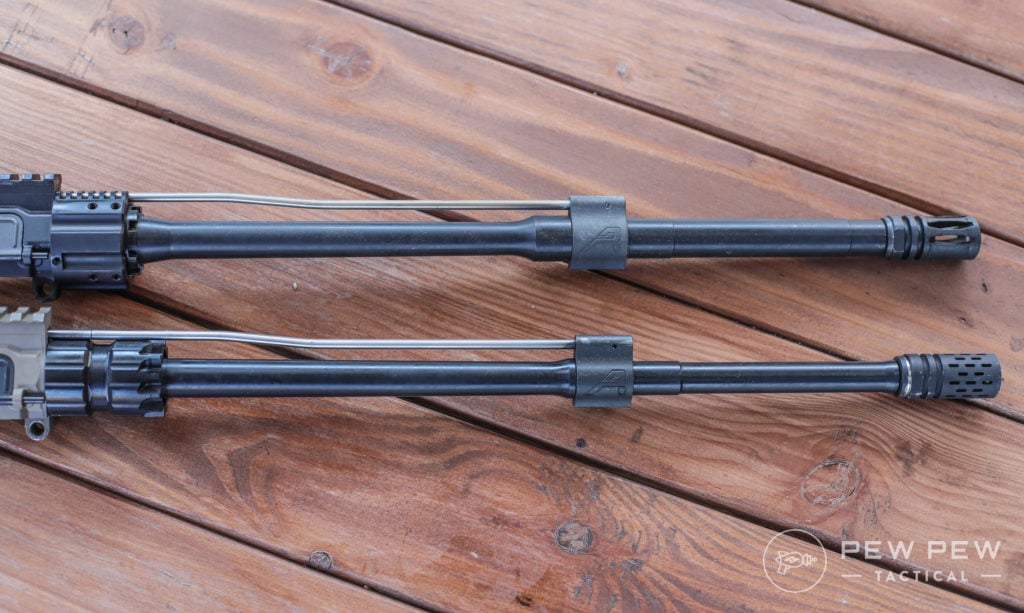
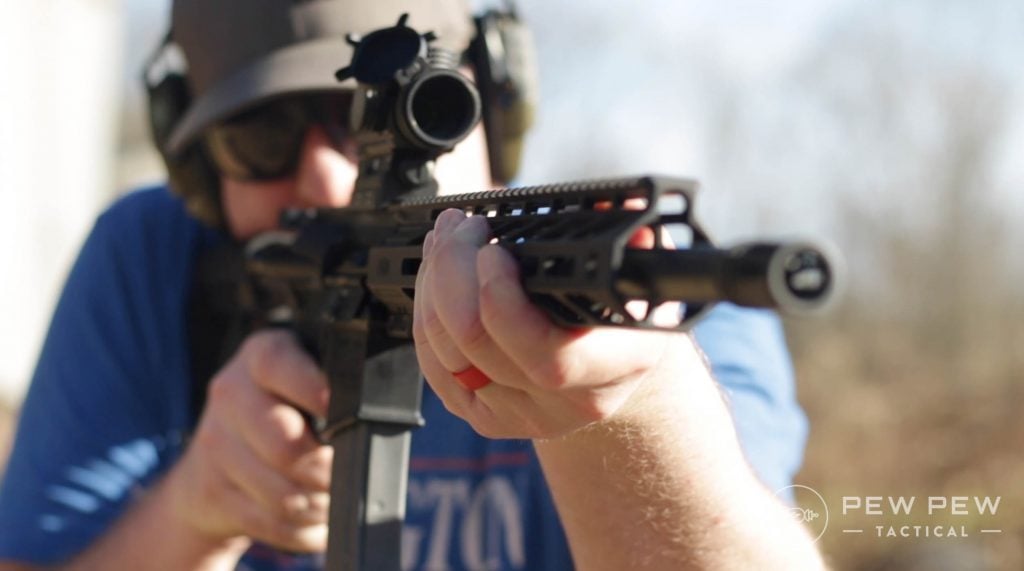
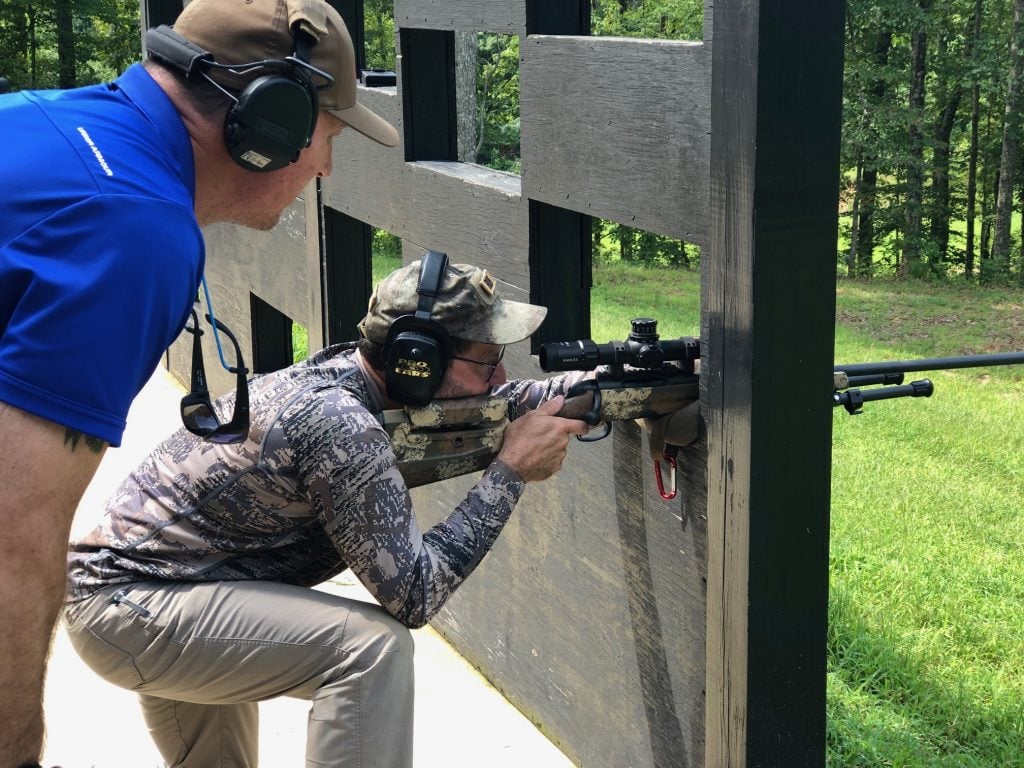
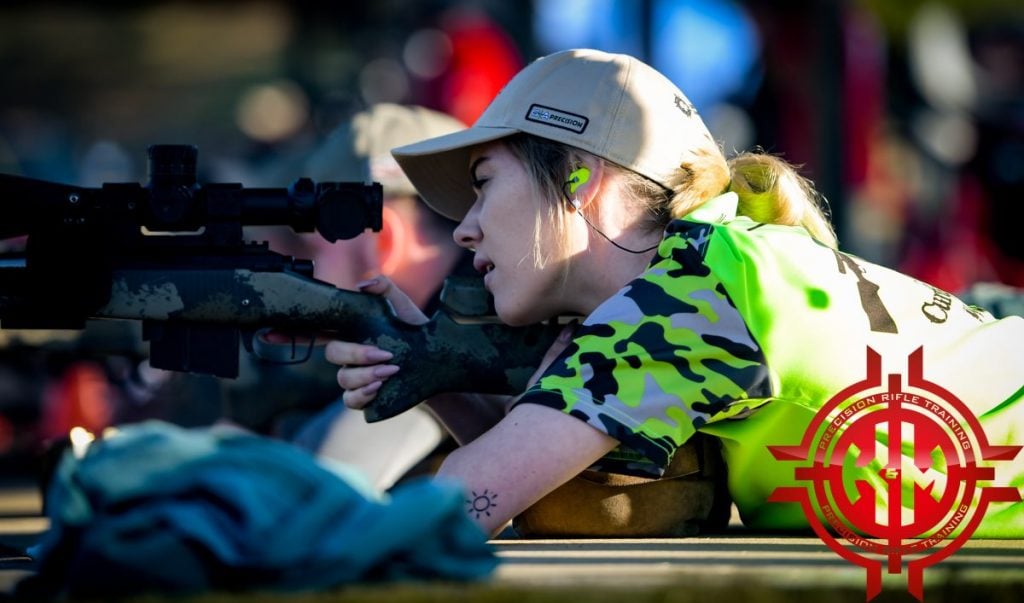


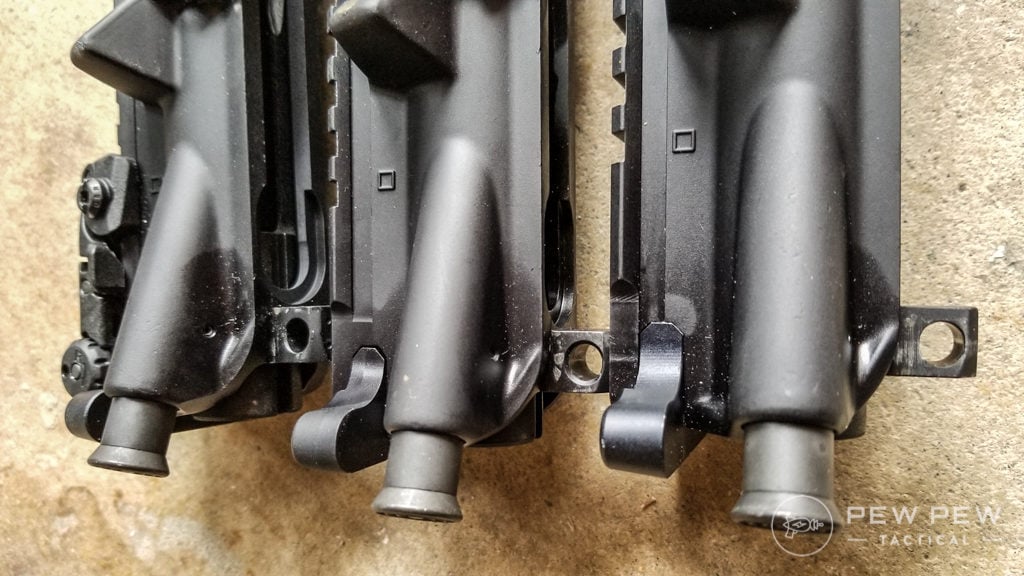
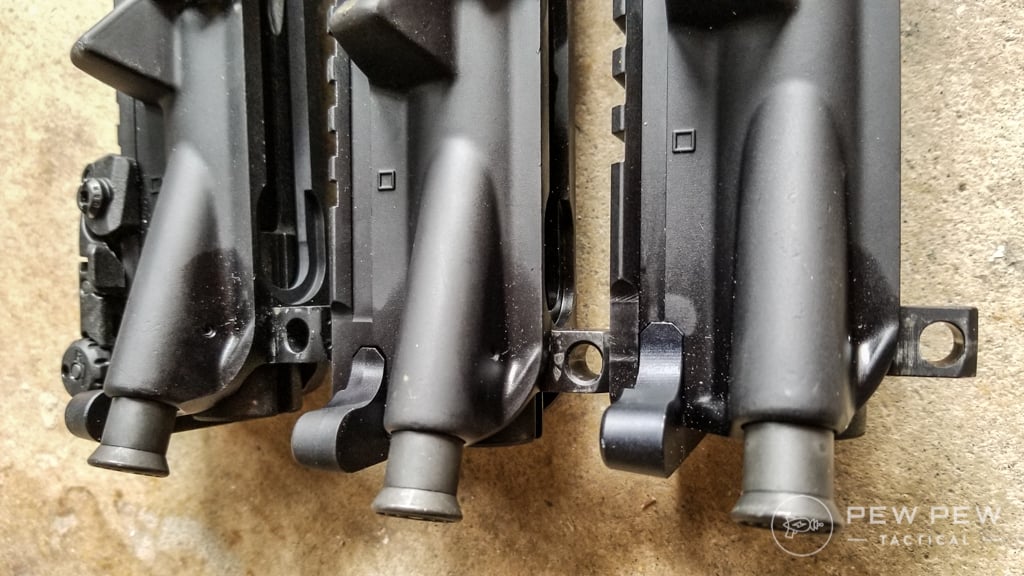
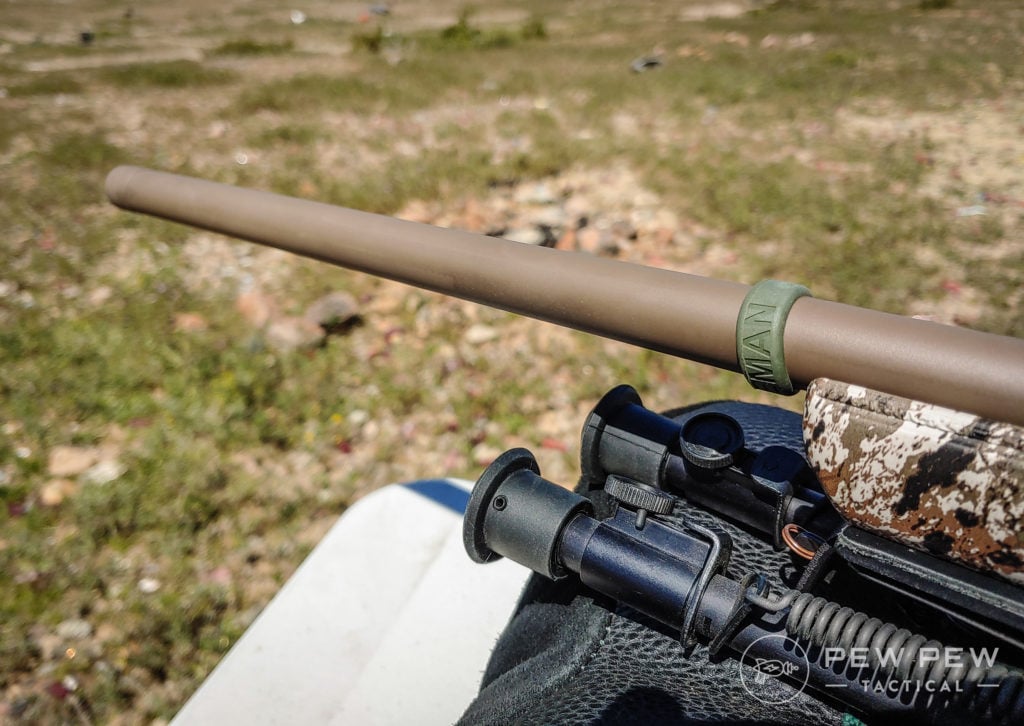
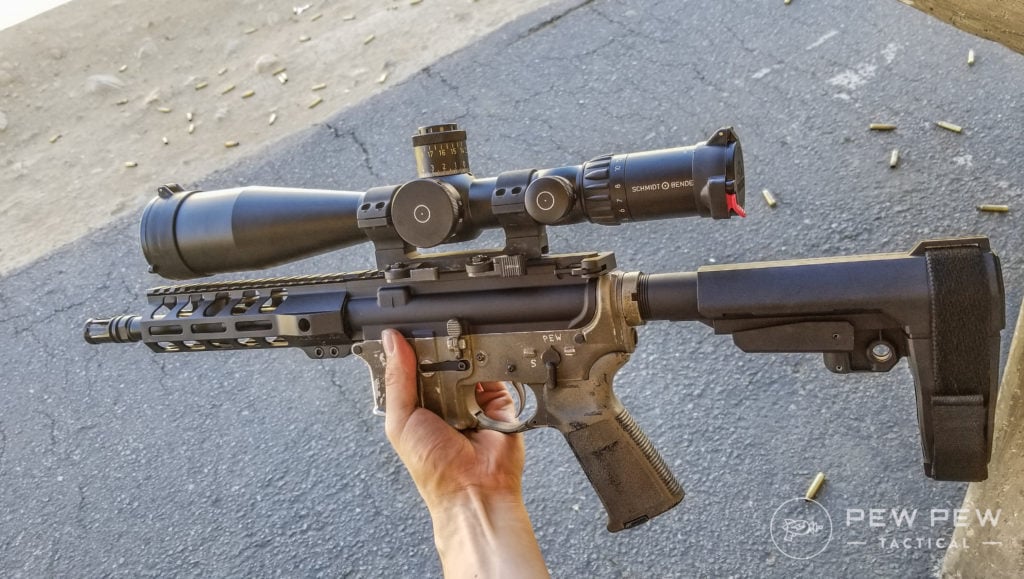
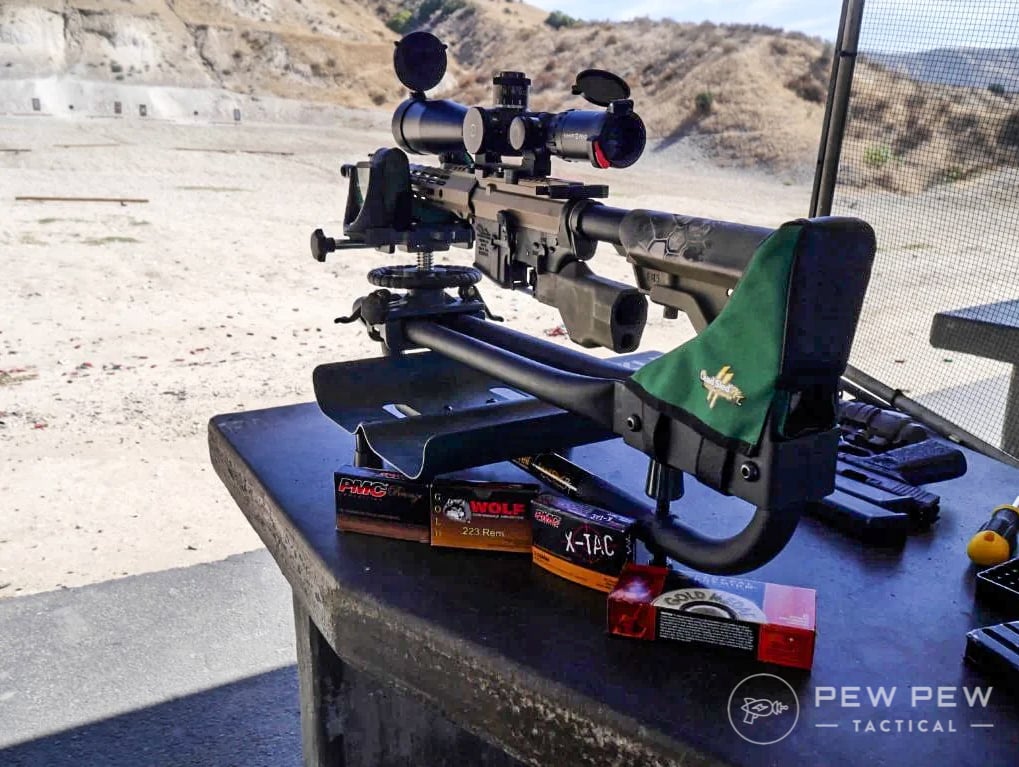
![Barrel Break-In: What Is It & How To Do It Right [Guide]](https://www.pewpewtactical.com/wp-content/uploads/2021/12/8.-Remington-Factory-Ammo-1024x578.jpg)
![Barrel Break-In: What Is It & How To Do It Right [Guide]](https://www.pewpewtactical.com/wp-content/uploads/2018/04/Winchester-32-Piece-Cleaning-Kit-1024x683.jpg)
![Barrel Break-In: What Is It & How To Do It Right [Guide]](https://www.pewpewtactical.com/wp-content/uploads/2021/11/4.-Crimson-Trace-RAD-Max-Range-Shooting-1024x575.jpg)




























